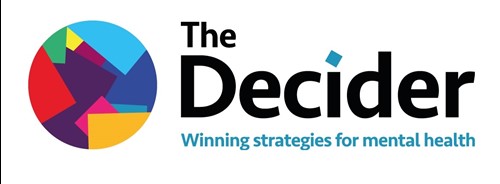PTSD Self Help
Self help guide for PTSD, using effective CBT strategies. Make sense of the problem, then learn how to make positive changes
PTSD Self Help - this page as PDF
Post-Traumatic Stress Disorder (PTSD) can occur following a severely traumatic incident, or a series of less severe incidents. Complex PTSD can be experienced as a result of repeated childhood traumas.
It is normal to experience stress after a trauma, but the symptoms normally diminish after several weeks. If the symptoms persist, then trauma-focused CBT or EMDR are currently recommended as the treatments of choice.
Symptoms include flashbacks (traumatic re-living of the event, including images, sounds, emotions and physical sensations) and nightmares, resulting in severe anxiety and/or angry reactions or avoidance of any triggers that may remind the individual of the incident in some way.
PTSD develops because the trauma experience was so distressing that we want to avoid any reminder of it. Our brains don't process the experience into a memory, so the experience stays as a current problem instead of becoming a memory of a past event. Each time we are reminded of the event, the 'flashbacks' mean we experience the trauma again, as though it is happening again, right now. That is very distressing, so we do our utmost to stop the flashback, and avoid any further reminder of the event, so the event remains un-processed.
Cognitive Behaviour Therapy, and EMDR, helps our brain to process the traumatic event into a memory, filing it away in the appropriate filing cabinet of our mind, so that it becomes a past event, rather than constantly reliving the trauma as happening right now. Therapy will help us to think about or imagine the traumatic event in a safe environment, and we can gradually expose ourselves to those situations that remind us of the event. Inevitably, thinking and talking about the trauma may be upsetting at the time, but it will reduce the overall distress and resolve the problem.
- Read: Trauma & the Brain PDF
- Read: Trauma Metaphor PDF
See this page for information about anxiety and the normal body response.
Example Of A Vicious Cycle Of PTSD
Self Help For PTSD
Identify The Factors That Help Keep The PTSD Going
Use the cogs diagram (PDF) to help you identify what contributes to the PTSD. You may well need professional help to overcome some factors such as Fragmented memory & Flashbacks, but you will find there are some things you can do that will help.
Example vicious cogs of PTSD:
Overcoming Avoidance & Facing Your Fears
We try to avoid all the situations, people, places and even thoughts, which are likely to distress us. This avoidance helps prevent us becoming distressed in the short-term, but it is one of the main factors which keeps the problem going over a long time. Avoidance also interferes greatly with our everyday lives as our lives become very restricted.
- See Overcoming Avoidance
Dealing With The Memory
We normally avoid thinking about the traumatic event and so our brain never processes it in the normal way. It is therefore helpful to deliberately think about and remember the event.
- Find out as much as you can about the event, which may include asking other people involved about what they remember from their perspective, including perhaps emergency personnel.
- Try to piece the story of the event together.
- Write it down, even if only using bullet points.
- Talk about the event with other people who perhaps weren't there, but can listen and be supportive and offer a helpful perspective.
Self Help For PTSD - video
Coping with flashbacks & Nightmares
Because we become upset and avoid thinking about the trauma, the brain has not been able to process and file the memory away, so any trigger tricks the brain into thinking the even is happening again, right now, and we re-experience all the feelings and sensations as thought it really was happening right now.
- Use these coping strategies and grounding techniques during a flashback: Grounding Techniques & Coping with Flashbacks
- Use this Discrimination Worksheet PDF before a flashback, so that you can be better prepared to reassure your brain that the event is NOT happening again right now.
- Set aside some time every day, maybe 15-20 minutes, to think about the traumatic event and write down some notes. Try to make it the same time each day, which might be evening time if you have nightmares. Finish this time by writing down a positive coping statement such as "I survived", "I'm taking back control of my life", "I have ...... who/which supports me".
Develop Coping Strategies for dealing with stress and anger, e.g.
- STOPP
- Mindful Breathing
- Coping with Flashbacks
- HELP FOR ANXIETY - NOW !
- Distract !
- Mindfulness
- NOW
- STOPP
- Overcome Avoidance - use the Avoidance worksheet
- Fact or Opinion
- Emergency or soothe box
- Relaxation techniques
- Colour Breathing
- Imagery
- Defusion
- Positive Coping Statements
- Thought Challenging or The Court Case
- The Helicopter View
- The Mind Bully
- Flexible Thinking
- Music
- Anger Self Help
- Stress Self Help
PTSD Self Help - this page as PDF
More Self Help For PTSD
- Coping with Flashbacks
- HELP FOR ANXIETY - NOW !
- Distract !
- Read: Trauma & the Brain
- Read: Trauma Metaphor
- Read Anxiety Self Help
- Practise Mindful Breathing
- Practise STOPP
- Overcome Avoidance - use the Avoidance worksheet
- Read Fact or Opinion
- Read About Automatic Thoughts
- Emergency or soothe box
- Practise completing the Vicious Cycle & Alternatives
- Use the PTSD Thought Record Sheet
- Use the Discrimination Worksheet (Differentiating then & now) to prepare for flashbacks
- Work your way through the 7 Step CBT Self Help Course: substitute the PTSD Thought Record Sheet for the generic Thought Record/Challenge Sheet
- Use the self help MP3s
Self Help Books
Overcoming Traumatic Stress: A Self-Help Guide Using Cognitive Behavioral Techniques
The PTSD Workbook: Simple, Effective Techniques for Overcoming Traumatic Stress Symptoms
Overcoming Trauma and PTSD: A Workbook Integrating Skills from ACT, DBT, and CBT
The Everything Guide to Overcoming PTSD: Simple, effective techniques for healing and recovery
Resources
- STOPP
- Mindful Breathing
- Coping with Flashbacks
- HELP FOR ANXIETY - NOW !
- Distract !
- Mindfulness
- NOW
- STOPP
- Overcome Avoidance - use the Avoidance worksheet
- Fact or Opinion
- Emergency or soothe box
- Relaxation techniques
- Colour Breathing
- Imagery
- Defusion
- Positive Coping Statements
- Thought Challenging or The Court Case
- The Helicopter View
- The Mind Bully
- Flexible Thinking
- Music
- Anger Self Help
- Stress Self Help
PTSD Self Help - this page as PDF
More Self Help For PTSD
- Coping with Flashbacks
- HELP FOR ANXIETY - NOW !
- Distract !
- Read: Trauma & the Brain
- Read: Trauma Metaphor
- Read Anxiety Self Help
- Practise Mindful Breathing
- Practise STOPP
- Overcome Avoidance - use the Avoidance worksheet
- Read Fact or Opinion
- Read About Automatic Thoughts
- Emergency or soothe box
- Practise completing the Vicious Cycle & Alternatives
- Use the PTSD Thought Record Sheet
- Use the Discrimination Worksheet (Differentiating then & now) to prepare for flashbacks
- Work your way through the 7 Step CBT Self Help Course: substitute the PTSD Thought Record Sheet for the generic Thought Record/Challenge Sheet
- Use the self help MP3s
Self Help Books
Overcoming Traumatic Stress: A Self-Help Guide Using Cognitive Behavioral Techniques
The PTSD Workbook: Simple, Effective Techniques for Overcoming Traumatic Stress Symptoms
Overcoming Trauma and PTSD: A Workbook Integrating Skills from ACT, DBT, and CBT
The Everything Guide to Overcoming PTSD: Simple, effective techniques for healing and recovery


